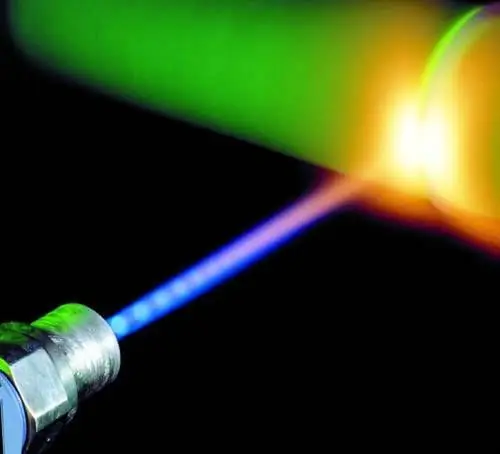The word "laser" is made up of the first letters of the phrase light amplification by stimulated emission of radiation, which in English means "amplification of light by stimulated emission." That is, a laser is a device that converts thermal, light, and electrical energy into the energy of a narrowly directed radiation flux. This radiation can be either continuous or discrete.

The laser consists of three main parts: an active medium (in which, in fact, radiation is generated), a source of external energy (pump energy), and an optical resonator, which serves to maintain the generated waves of the required frequency and suppress others. The active medium, depending on the type of laser, can be a solid, liquid, gas, plasma.
Theoretically, the foundations for the creation of a laser were laid in the works of many world famous scientists, including A. Einstein. Among them were also our compatriots N. Basov and A. Prokhorov, laureates of the Nobel Prize in Physics for 1964. The first prototype of a workable laser was demonstrated in 1960. It worked in a pulsed mode, an artificial ruby crystal served as an active medium in it. In the same year, a continuously operating helium-neon laser was created. In 1963, physicists J. Alferov and G. Kremer developed the theory of semiconductor heterostructures. On the basis of this theory, new types of lasers were created. For this work, Alferov and Kremer were also awarded the Nobel Prize in 2000.
Lasers are widely used in various fields. They are used for cutting and welding parts made of a wide variety of materials, for coating surfaces by laser spraying, for engraving and marking products, etc. Laser printers, barcode readers, pointers have long been included in our everyday life.
Lasers are used to create a three-dimensional holographic image. Without them, modern measuring technology is inconceivable, whether it be measuring time, temperature, angular velocity, optical density, etc.
They are successfully used in medicine for a wide variety of operations, primarily in the field of eye surgery and cosmetology. The laser beam has long received the respectful name "bloodless scalpel".
Finally, lasers are finding ever more widespread use in military affairs, not only as means of guidance and distance measurement, but also in the creation of fundamentally new land, sea and air-based systems.

